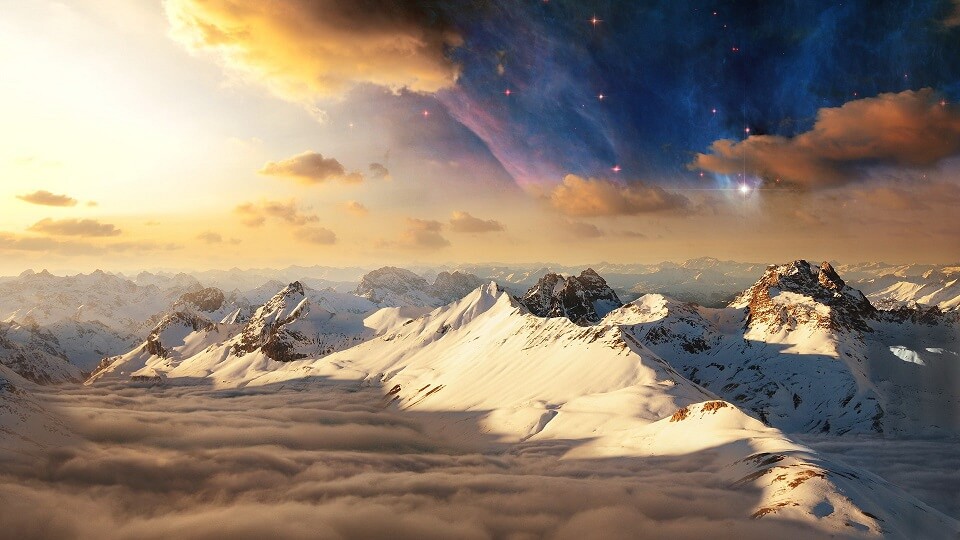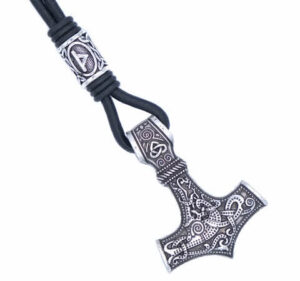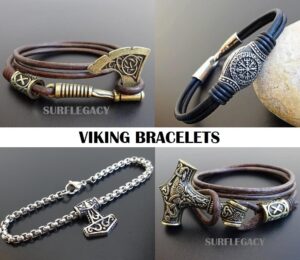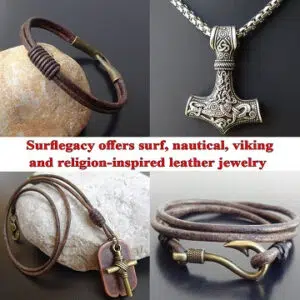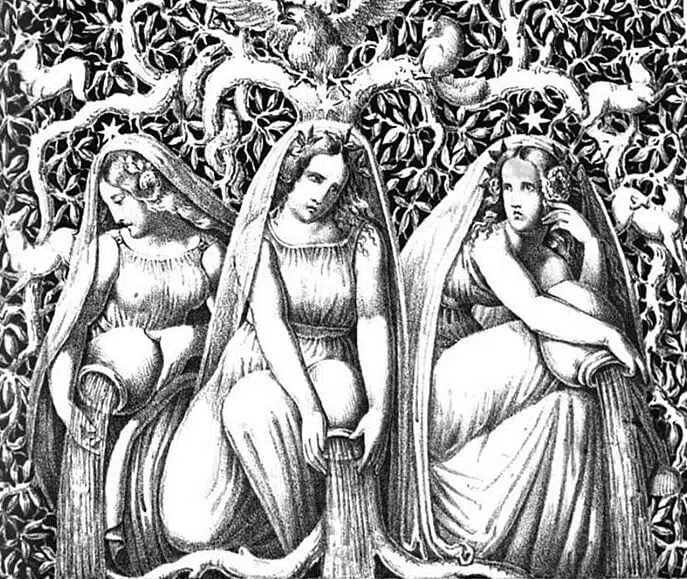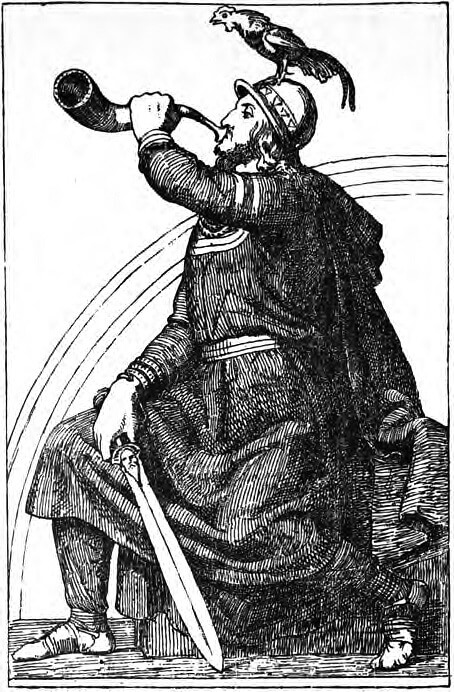Embark with us on an enthralling journey through the annals of Norse mythology, as we unravel the mysteries of Asgard, the realm of the gods, and its awe-inspiring inhabitants. Nestled amidst the nine realms of a cosmos steeped in legend and lore, Asgard continues to captivate the imagination of those who encounter its epic tales.
In this blog post, we invite you to step into the enchanting world of Asgard, where ancient deities wield unimaginable power, heroic warriors prepare for the end of days, and awe-inspiring sagas unfold.
Together, we will uncover the secrets of this realm and its divine denizens, shedding light on their significance in the captivating narrative of Norse mythology and their enduring impact on our modern world. So, strap on your winged helmet, and let’s begin our adventure!
Asgard (also Ásgarðr) is in Norse mythology the home of the Æsir, separate from the world of mortals, Miðgarðr. Originally the world we call Ásaheimr was called Godheimr (home of the gods), but, as was the case with Miðgarðr, early researchers confused the word for “gods” with that of its main caste, and Godheimr became Ásgarðr in most sources.
Yggdrasil and the 9 realms
According to Norse Mythology, the cosmos was divided into 9 realms.
The Nine Realms form the foundation of Norse cosmology, each representing a distinct world with unique inhabitants and characteristics.
These realms are interconnected by the mighty Yggdrasil, the World Tree, an immense ash tree that serves as the cosmic axis, its branches and roots spanning across the universe.
This divine tree not only supports the cosmos physically but also facilitates the interactions between the realms, making Yggdrasil the lifeblood of the Norse universe.

The Icelandic writer Snorri (1179-1241) divided the 9 worlds as follows:
Asgard – Realm of the Aesir, connected to Midgard by the rainbow bridge Bifrost
Alfheim – Realm of Elves
Hel – Realm of the dead for disease or old age, and then of the majority of the population
Jotunheim – Realm of Giants and Ice Giants
Midgard – Realm of Humans, between Asgard and Jotunheim
Muspelheim – Realm of Fire, the fire giant Surtr, and the forces of chaos in his service
Nidavellir/Svartalfheim – Dwarf kingdom below the earth
Niflheim – Realm of ice, snow and fog near Muspelheim
Vanaheim – Realm of the Dwarves

In the time before time, when nothing existed, there was only the Yggdrasil tree and the void. There is no mention of who or what created the great tree of the world, but all nine kingdoms existed near or on its roots.
It seems to have grown out of the misty void of Ginnungagap, surrounded on one side by the scorching Muspelheim and on the other by the icy Niflheim. At some point, the fires of Muspelheim began to melt the ice of Niflheim and two entities emerged from the realm of mist: the giant Ymir and the cow Audhumla.
Audhumla fed by licking the ice, and soon brought forth Buri, the ancestor of the gods. Buri had a son (it is not mentioned how) named Borr, who joined forces with the giantess Bestla (she also appears out of nowhere). Bestla gave birth to the first among the gods: Odin, Vili, and Ve.
While this was happening, Ymir gave birth to the giants through the process of autogamy (self-fertilization). While he slept, a male and female were born from his left armpit, and a son from his legs; these were the ancestors of the giants.
Odin and his brothers killed Ymir, and the giants all drowned in his gushing blood, except for Bergelmir and his wife who escaped on a raft: they later begat all the giants who would be the sworn enemies of the gods.
After the death of Ymir, Odin, Vili and Ve dragged his body into the void of Ginnungagap, where they shaped the world with the parts of his body, and later, the first man (Ask) and the first woman (Embla) from two trees. At this same stage, it seems, the nine kingdoms were also created.
Asgard Unveiled: The Divine Realm and Its Illustrious Inhabitants
It is believed that originally Asgard was part of the world of humans, but the writer Snorri places it in the heavens, connected to Midgard thanks to Bifrost, the rainbow bridge.
Asgard, the celestial stronghold of the Aesir gods, exudes an aura of grandeur and mystique that has captured the imaginations of countless generations.
Its landscape is a breathtaking fusion of natural beauty and divine architecture, with verdant fields, majestic mountains, and resplendent palaces that shimmer with otherworldly splendor. The very atmosphere of Asgard radiates an air of divinity, encapsulating the essence of the powerful deities that reside within its realm.
The Aesir are one of the two principal groups of gods in Norse mythology, with Asgard serving as their heavenly abode.
Asgard is home to an array of remarkable deities, each with their own unique roles and responsibilities within the tapestry of Norse mythology. The most notable residents of Asgard include Odin, Thor, and Frigg, among others, whose stories and deeds have left an indelible mark on the mythological narrative.
Odin, the Allfather and ruler of Asgard, is the god of wisdom, war, and poetry. Known for his relentless pursuit of knowledge, he sacrificed one of his eyes to drink from the well of wisdom, Mimir’s Well, and even hung himself from Yggdrasil for nine days to gain the knowledge of runes. As a war god, he presides over the battlefield and selects the bravest fallen warriors to join him in Valhalla.
Thor, the mighty god of thunder, is renowned for his unparalleled strength and his unyielding hammer, Mjölnir. As the protector of both Asgard and Midgard, he is often depicted in battles against the giants of Jotunheim, showcasing his role as a guardian of the realms. His adventures and trials are numerous, serving as an embodiment of strength, courage, and perseverance.
Frigg, Odin’s wife and the goddess of wisdom, marriage, and prophecy, is another pivotal figure in Asgard. As the queen of the Aesir, she is known for her clairvoyance and her deep connection to the destinies of both gods and mortals. Frigg is revered for her wisdom, compassion, and influence over the fates of individuals.
Other notable residents of Asgard include Baldur, the god of light and purity, who is tragically destined to be slain before the events of Ragnarok; Heimdall, the vigilant guardian of the Bifrost, who possesses keen senses and unwavering loyalty; and Tyr, the god of war and justice, who bravely sacrifices his hand to bind the monstrous wolf Fenrir.
Each of these deities plays a vital role in the stories and events that shape the world of Norse mythology, their actions intertwining in a complex and captivating narrative that continues to enthral audiences to this day.
Bifrost: The Rainbow Bridge Connecting Asgard and Midgard
Spanning the vast distance between Asgard and Midgard, the realm of humans, is the ethereal Bifrost, the Rainbow Bridge.
This shimmering, celestial path, guarded by the watchful Heimdall, serves as the primary conduit between the divine and the mortal worlds, allowing the gods to descend to Midgard and engage with the lives of the humans they oversee.
The Bifrost is a symbol of the interconnected nature of the Nine Realms, reminding us that even the gods are not entirely removed from the world of mortals.

The creation of Asgard
Asgard is the name used to indicate the kingdom of the Gods, a city built by the gods themselves.
The gods first created a huge workshop, then they placed a furnace and forged a hammer, a pair of tongs and an anvil, the prototypes of the tools used by man.
With these tools, they built in the center of Asgard a majestic dwelling, the largest of all the divine citadel: Gladsheim, the “abode of joy”. Inside they built a huge hall supported by golden columns and they placed thirteen thrones, one for each of the gods. For the goddesses was raised another palace, called Vingolf.
The Lord of Asgard and of all the Gods is Odin and has as his wife Frigg, with whom he generates several children. However, in Asgard, each deity has lands and dwellings that reflect its characteristics. For example, Odin resides in Valaskyalf, “rock of the slain”, which recalls the macabre activity of the god, patron of the dead in battle.
Thor, the strongest of the Gods, endowed with an exquisitely human strength, is the lord of Thrudvangar, “paths of power”, where stands the palace Bliskirnir, “the shining one”, which with its 540 rooms is the largest in Asgard.
At the borders of Asgard, near the Bifrost, the rainbow bridge that connects the divine citadel to the world of mortals, stands the residence of Heimdall, the guardian who has the task of watching over the divine possessions.
The Gods Aesir and Vanir
The Norse mythology has a very interesting feature: its pantheon provides for the coexistence of two different divine lineages, the Aesir and the Vanir.
The Aesir (Æsir), the Gods and Goddesses who live in Asgard, symbolize a stratified pantheon related to sovereignty, wisdom and war: they are warrior deities, and Odin is their leader.
Their power was contested by the Vanir, representing fertility and fecundity. The Vanir are more ancient, live in a land called Vanaheim and are great experts in witchcraft and magical practices, such as divination.
Both lineages have some characteristics purely human: in addition to being brave, possess many weaknesses, can often be jealous and vengeful, and can die and grow old. The Norse Gods are in fact subject to aging, and only by eating the magical fruits of the Goddess Idun, wife of the God Bragi, they can keep young.
One day came to Asgard a seductive woman, Gullveig, a witch expert in sowing discord among the gods: soon corrupted with greed and corruption the souls of the gods, the pillars of morality and honor.
It was therefore decided to condemn the witch to death. Gullveig, however, was part of the gods Vanir, who demanded an immediate return. Odin knew that not listening to this warning would lead to war, but the behavior of the witch had to be punished.
The gods erected a funeral pyre, bound the witch and set her on fire, but only after three attempts the flames consume her body.
The fire gave the Vanir a pretext to attack the Aesir. Both factions fought furiously, but the fate of the war remained in constant balance, testifying to each other’s valor. One day, however, using the power of their magical arts, the Vanir managed to destroy the mighty walls of Asgard.
Tired of a fratricidal war that had led to this ruin, the two families then made a peace treaty and exchanged hostages. The Aesir sent Mimir and Hoenir among the Vanir, who handed over Njordhr and his son Freyr.
In order to seal their pact, the representatives of the Aesir and the Vanir brought a wineskin and spat into it, sealing the peace with their divine saliva. From the jar was born Kvasir, the wisest creature in the universe, living testimony of the divine agreements.
The truce was immediately put to the test by the Vanir: they often asked advice to the wise Hoenir, who, however, agreed to answer only if he could consult with Mimir. One day, tired of always having to wait for the two Aesir to consult each other before talking, the Vanir beheaded Mimir.
Odin, filled with contempt and grief, went to the kingdom of the Vanir, had the head of the god delivered and, back in Asgard, sprinkled it with magical herbs, stopping the process of decomposition and preserving the wisdom. Since then, in times of need, Odin often converses with the head of Mimir, asking for advice on how to behave.
Asgard is represented as a divine city with high towers, surrounded by a great wall. The palace in which these gods dwell takes the name of Válaskjálf and inside it is positioned the throne on which Odin sits, accompanied by Frigg, his celestial wife.
The palace has a majestic room on whose walls are placed shields and parts of the armor. Another of the palaces in Asgard is Valhalla which, according to Norse tradition, houses the souls of warriors who died valiantly in battle; the warriors who are killed during the clashes, wake up and return to the “warriors’ paradise” to feast during the night.
The fortification of Asgard
The walls surrounding Ásgarðr were built by a giant (often identified as an ice giant), who was to receive Freyja and the sun and moon as his bride in return.
This was as long as the work was completed within six months and without any help from outsiders. Svadilfari the giant’s horse, was allowed to be used by the gods, but this particular horse was an exceptional worker, and could run twice as fast as his master.
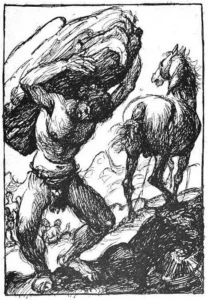
Svadilfari and his Master
To avoid honoring the agreement, Loki lured the giant’s magic horse away, transforming himself into a mare. The work was not completed in time and the gods, therefore, evaded payment. Thor killed the giant and when Loki came out of the forest he gave birth to Sleipnir, the best of all horses, which became the steed of Odin.
As we said, Asgard is the residence of Odin, king of the gods. Odin, is not only the father of Thor, but is the father of the gods and the main deity of Germanic religion and mythology.
He who will lead, according to legend, gods and men against the forces of chaos in the last battle, when there will be the end of the world called, Ragnarök. And God will be killed by the wolf Fenrir, only to be avenged by Viðarr who will tear his jaws open after putting his foot in his throat. (a legend just far from the reality of the bible by the way!).
Valhalla: The Hall of Fallen Warriors
Valhalla, the Hall of Fallen Warriors, stands as a symbol of honor and glory in the realm of Asgard. This majestic hall, adorned with golden shields and spears, is where the Einherjar, fallen warriors handpicked by the gods, reside in their afterlife.
These brave souls have proven themselves in battle and earned their place in this prestigious abode, forever commemorating their heroic deeds.
The selection process for the Einherjar is carried out by the Valkyries, the divine shieldmaidens who serve Odin.
These fierce and powerful female warriors soar over the battlefield, choosing the most valiant of the fallen to join the ranks of the worthy dead.
Once chosen, these warriors are whisked away to Valhalla, where they are treated to a hero’s welcome, complete with feasts, mead, and camaraderie.
The ultimate purpose of Valhalla and the Einherjar is to prepare for Ragnarok, the prophesied end of the world.
Ragnarok
In Norse mythology, Ragnarok is the cataclysmic battle between the gods and the forces of chaos, which will result in the destruction of the cosmos and the birth of a new world.
The Einherjar, having spent their afterlife training and feasting in Valhalla, will be called upon by the gods to fight alongside them in this epic confrontation.
Thus, Valhalla serves as both a reward for the worthy dead and a vital training ground for the apocalyptic battle that lies ahead.
Ragnarok, often referred to as the “Twilight of the Gods” or the “Doom of the Gods,” is the prophesied apocalyptic event in Norse mythology that signifies the end of the world as we know it. This cataclysmic series of events is marked by epic battles, the deaths of numerous gods, and widespread destruction that ultimately leads to the rebirth of a new world.
The events of Ragnarok are foretold to begin with the onset of Fimbulwinter, an unrelenting three-year winter that will plunge the world into chaos, followed by a series of natural disasters and cosmic disturbances.
Amidst this turmoil, ancient enemies of the gods will rise, including the monstrous wolf Fenrir, the great serpent Jormungandr, and the fire giant Surtr, who will set the world ablaze.
The Aesir gods, alongside the valiant Einherjar who have been training in Valhalla, will engage in a final stand against these formidable foes in a series of legendary battles.
Key figures like Odin, Thor, and Freyr will meet their demise during these confrontations, marking the end of the gods’ reign over the cosmos.
Despite the devastation and loss that Ragnarok brings, hope remains. The world, engulfed by water, will re-emerge anew, fertile and teeming with life. From the ashes of the old world, a new generation of gods and humans will rise to rebuild and forge a new future.
The tale of Ragnarok serves as a powerful allegory for the cyclical nature of life, death, and rebirth, embodying the Norse belief in the resilience of the world and the enduring spirit of creation.
This apocalyptic narrative, much like the realm of Asgard, remains a captivating and essential part of Norse mythology, inspiring reflection on the themes of destruction, renewal, and the eternal struggle between chaos and order.
Asgard in Modern Culture
Norse mythology has had a significant impact on modern culture, particularly in literature, films, and video games. Asgard, the realm of the gods in Norse mythology, is central to many of these adaptations. Key examples include the Marvel Cinematic Universe (MCU), Neil Gaiman’s “Norse Mythology,” and the “God of War” series.
- Marvel Cinematic Universe (MCU): The MCU has introduced Norse mythology and Asgard to a vast audience through its portrayal of Thor, Loki, and other characters from the mythos. Thor, the god of thunder, and his adopted brother Loki, the god of mischief, are central figures in the MCU. The films often depict Asgard as a highly advanced, utopian world that mixes elements of science fiction and fantasy. This has helped to increase awareness of Norse mythology, although the MCU’s interpretation is a modernized, somewhat sanitized version of the original myths. The success of these films has brought Asgard into popular culture, encouraging further exploration of Norse mythology by a new generation.
- Neil Gaiman’s “Norse Mythology”: This book retells the stories of Norse mythology in a way that is accessible to modern readers. Gaiman’s work is notable for its fidelity to the source material while still employing a contemporary narrative style. Through his vivid descriptions and storytelling, Gaiman has helped to popularize Asgard and Norse mythology for a wide audience making it more accessible and engaging. The book has received critical acclaim and has been a bestseller, further demonstrating the continued interest in and relevance of Norse mythology in modern culture. Gaiman’s work has inspired other authors and creators to explore and adapt these ancient stories, ensuring their continued prominence in the literary world.
- God of War series: The popular action-adventure video game series, “God of War,” has also incorporated elements of Norse mythology, particularly in its 2018 installment. The game’s protagonist, Kratos, a former Greek god, finds himself in the world of Norse gods and monsters, with Asgard playing a central role in the game’s narrative. This adaptation showcases the rich tapestry of Norse mythology, with players encountering various gods, creatures, and locations inspired by the ancient myths. The game’s stunning visuals and engaging gameplay have helped to introduce Norse mythology to an even broader audience, particularly among younger generations.
Conclusion
The mystical realm of Asgard remains a cornerstone of the enthralling world of Norse mythology. This celestial domain, with its compelling legends and awe-inspiring inhabitants, continues to captivate and inspire generations of enthusiasts.
As we immerse ourselves in the lore of Asgard and its myriad connections to the other realms, we not only unearth the captivating stories of the gods and heroes but also gain a deeper appreciation for the rich cultural heritage and timeless wisdom embodied within these ancient tales.
The realm of Asgard, transcending the ages, serves as a testament to the enduring power of mythology and the human imagination.
Are you passionate about Norse Mythology or Viking Culture?
If you are interested in Norse Mythology or Vikings do not hesitate to visit our Viking Jewelry store.

